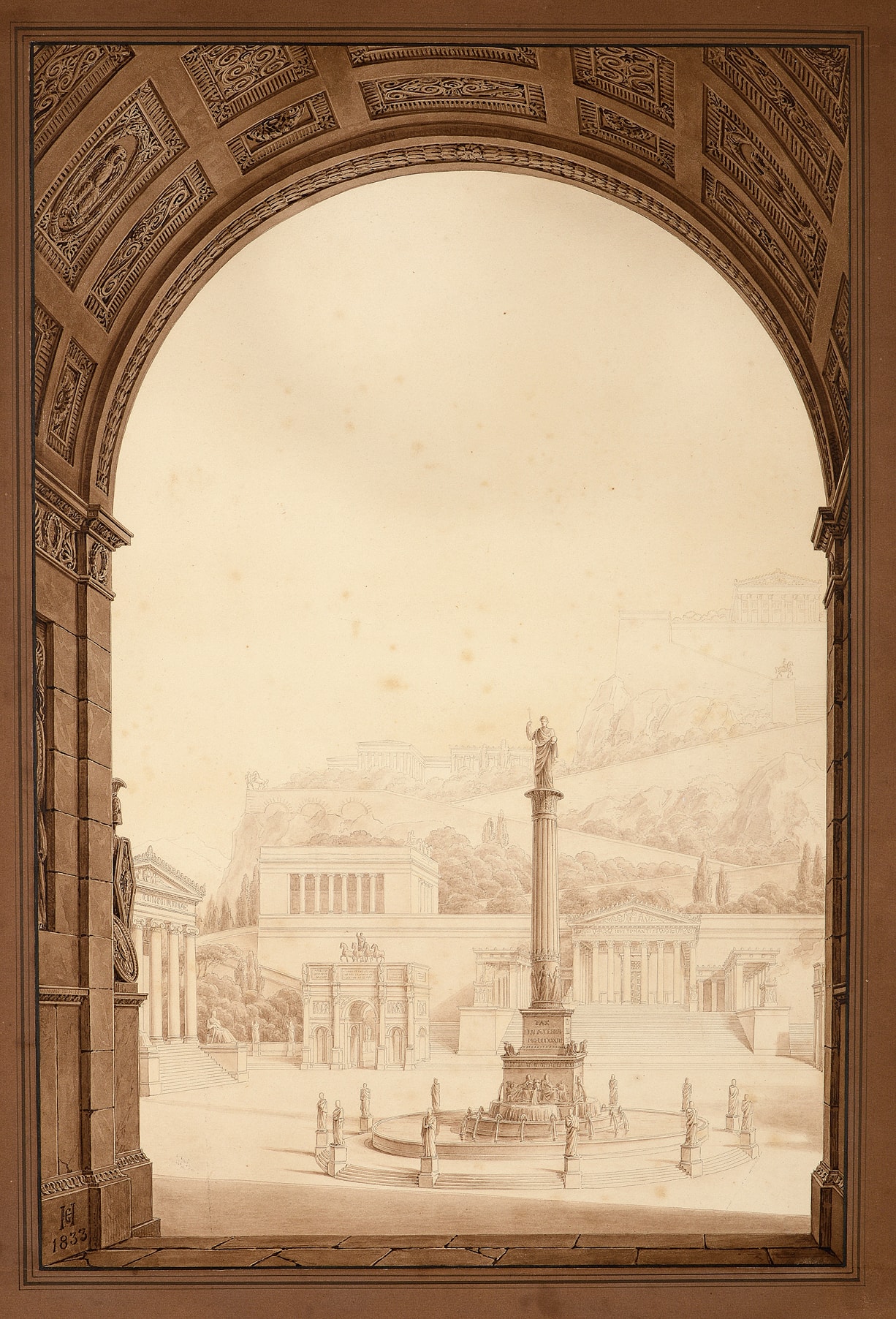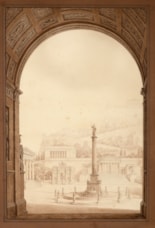Gustav Friedrich HETSCH
(Stuttgart 1788 - Copenhagen 1864)
An Imaginary Reconstruction of the Roman Forum
Sold
Pen and brown ink and brown wash, over a pencil underdrawing.
Laid down on a 19th century mount washed brown, with framing lines in brown ink.
Signed with a monogram and dated GH / 1833 at the lower left.
485 x 327 mm. (19 1/8 x 13 1/4 in.) [sheet]
597 x 442 mm. (23 1/2 x 17 3/8 in.) [including mount]
Laid down on a 19th century mount washed brown, with framing lines in brown ink.
Signed with a monogram and dated GH / 1833 at the lower left.
485 x 327 mm. (19 1/8 x 13 1/4 in.) [sheet]
597 x 442 mm. (23 1/2 x 17 3/8 in.) [including mount]
The present sheet can be likened to an ink and wash drawing of the imaginary perspectival interior of a classical building by Gustav Hetsch, signed and dated 1820, in the collection of the Kunstakademiets Bibliotek in Copenhagen. Intended as a design for a pantheon or temple devoted to famous men, the drawing was the artist's reception piece for admission into the Kunstakademie in Copenhagen, to which he was accepted in June 1820.
A number of other large-scale drawings of architectural fantasies by Hetsch, bearing dates between 1822 and 1840, are also in the collection of the Kunstakademiets Bibliotek. Another comparable drawing by the artist, depicting the interior of the Roman church of San Lorenzo fuori le Mura, is in the Art Institute of Chicago.
A number of other large-scale drawings of architectural fantasies by Hetsch, bearing dates between 1822 and 1840, are also in the collection of the Kunstakademiets Bibliotek. Another comparable drawing by the artist, depicting the interior of the Roman church of San Lorenzo fuori le Mura, is in the Art Institute of Chicago.
The son of the German classical painter Philipp Friedrich von Hetsch (1758-1838), Gustav Friedrich Hetsch was active as an architect, designer and draughtsman. Born in Stuttgart, he studied in Tübingen and in Paris, where he was a pupil of Charles Percier and worked on the church of Sainte-Geneviève, now the Panthéon. In 1812 he returned to Stuttgart but soon after travelled to Italy, where he met the Danish architect Peder Malling, who encouraged him to move to Copenhagen in 1815. Hetsch was to spend the remainder of his long career in Denmark. He contributed to the interior decoration of the rebuilt Christiansborg Palace, and in later years designed the Great Synagogue of Copenhagen, completed in 1833, and the church (later Cathedral) of Saint Ansgar, built between 1840 and 1842. Much of Hetsch's work was in the field of decorative art, however, and between 1828 and 1857 he served as artistic director of the Royal Porcelain Factory. He also designed metalwork and furniture, and taught at the Royal Danish Academy of Fine Arts in Copenhagen, where he eventually rose to the position of Professor of Architecture.





